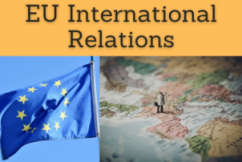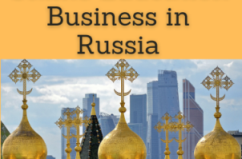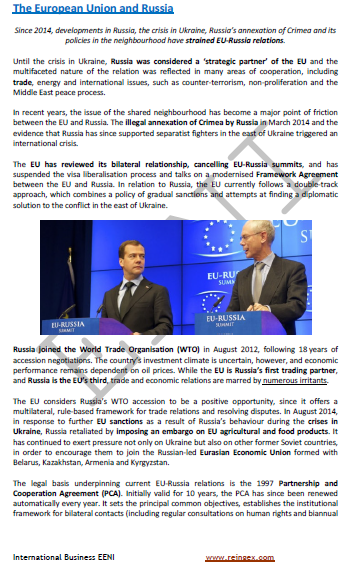European Union-Russia Trade Agreement

Russian Federation: 3th largest trading partner of the EU
- Introduction to the trade relations between the EU and Russia
- The New European Union-Russia Trade Agreement
- Black Sea Synergy

The Subject “The New European Union-Russia Trade Agreement” belongs to the following Online Programs taught by EENI Global Business School:
Doctorate: European Business, World Trade.
Masters: International Business, Foreign Trade.

 Masters adapted to Russian Students
Masters adapted to Russian Students
Masters adapted for  EU Students.
EU Students.
Languages:  or
or  UE-Rusia
UE-Rusia  UE-Russie
UE-Russie  UE-Rússia.
UE-Rússia.

Sample - EU-Russia

The Russian Federation is the third largest trading partner of the EU, with the Russian petrol and gas exports making up a significant percentage of the Russian exports to Europe.
- International Trade rose by 32% compared to 2009 (after having been hit by the global economic recession)
- The Russian Federation enjoyed an external trade extra of 68 billion Euros with the EU
- Total account extra of Russia rose by 47%
- The Russian Federation is the largest energy products supplier to the EU (25% of the EU petrol and gas consumption)
- The EU exports to the Russian Federation are diversified: machinery and transport equipment (42.9%), manufactured products, food, and live animals
- The EU and Russia finished a Partnership and Cooperation Agreement in 1994
Negotiations on a New European Union-Russia Trade Agreement were initiated in 2008.
The New European Union-Russia Agreement provide an exhaustive framework for the EU-Russia International Trade Relations (new dispositions on bilateral trade, foreign direct investment, and energy).
Russia belongs to the Orthodox Economic Area and the countries of the EU to the European Economic Area of the Western Civilization.

(c) EENI Global Business School (1995-2024)
We do not use cookies
Top of this page



